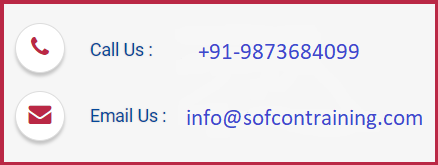Best PCB and Circuit Design Training
Introduction
Join the Best PCB and Circuit Design Training
SOFCON INDIA PVT LTD is one of the top PCB design training institute in India. The institute aims to provide complete assistance and help to secure a job in their dream organizations. Having complete knowledge of the subject is necessary, but you also need to have practical knowledge of the same. As having excellent practical knowledge can lead you towards your dream job hence you secure a better future. SOFCON is one of the best PCB design training institute in India.
The candidates looking forward to making their career get to learn introduction to PCB and circuit design, types of PCBs, PCB printing, etching, and others. SOFCON TRAINING is one of the leading advanced PCB design training institute with the latest and updated course content designed in such a way to boost the career of the aspirants.
The institute has excellent infrastructure and superb lab facilities for different courses. SOFCON aims to give right direction to a large number of students for PCB and circuit design at an affordable fee. The live classroom study and practical experience of circuit designing boost your confidence and trains you with appropriate skills which you must apply while performing any activity.
SOFCON offers one of the best PCB and circuit design training in Noida, Delhi, Faridabad, Ahmedabad with 100% placement support. The course has perfectly organized and well-defined course modules. Not only this training session provided by the SOFCON prepares the students for the future to be as par with other candidates when it comes to showing off the skill sets.
The classes are carried out in different batches such as weekdays classes, weekend classes for working or non-working candidates, evening batches and fast-track training classes are also conducted. So, what are you waiting for? Tie your shoelaces and grab a seat for yourself in the institute to increase your chances of getting hired by top notch organization.
Course Content
What we learn…..
Module 1 : Introduction to Circuit Designing
» Fundamental of circuit design
» Creating New Components
» Introduction to Analog Circuit Design
» Introduction to Digital Circuit Design
» Placing Symbols and Ports
» Labeling components
» Circuit optimization
Module 2 : Introduction to PCB Design
» Definition and Evolution of PCB
» Purposes of a PCB
» Types of PCBs
» Creating the Blank PCB
» Defining a sheet template
» Printed Circuit Technology
» PCB Construction (Power and Ground Plane)
» PCB Printing & Etching process
» Defining the Board Shape & Placement Boundary
» Creating a board outline & placement / routing boundary
Module 3 : PCB Schematic
» Basic concepts of PCB Designing
» Schematic capture
» From schematic to PCB
» Design structure
» Placing, editing, and connecting parts and electrical symbols
» Adding and editing graphics and text
» Changing your view of a schematic page
» Creating and editing parts
» About the processing tools
» Preparing to create a net list
» Creating a net list
» Creating reports
» Exporting and importing schematic data
Module 4 : PCB Editor
» PCB Material.
» Using the PCB Editor panel.
» PCB Editor Preferences.
» Board Options dialog.
» Board Layers and Colors.
» Grids.
Module 5 : PCB layers
» Enabling Layers.
» Layer definitions.
» Defining the Electrical Layer
» Defining Mechanical layers.
» Defining PWR/GND layers.
Module 6 : Design information to the PCB
» Design synchronization with schematic tool.
» Resolving synchronization DRCs.
» Design transfer using a Net list.
Module 7 : Design rules and design rule checking
» Adding design rules in constraints manager
» Design rules concepts.
» How rules are checked.
» Where rules apply.
» Constraint region setting
» Design Rule Checking
Module 8 : Component Placement tools
» Placing components.
» Finding components for placement.
» Moving components.
» Interactive Placement commands.
» Re-Annotation.
» Placement Considerations – [Mechanical – Thermal – Electrical – Assembly].
Module 9 : Shielding
» Shielding Effectiveness.
» Shielding Practices.
Module 10: Routing Diagram
» Routing topologies and PCB Routing Considerations.
» Single Ended.
» Routing guidelines
» Copper Pour
» Differential routing (Design Considerations).
Module 11: PCB Layout and Grounding
» Discontinuities and other higher order mode effect – bend vias, pads and connectors.
» Basic layout rules.
» Basic grounding rules.
Module 12 : Footprint libraries
» Introduction to Library Design.
» IPC standards in Foot print design.
» Pad Design.
» Foot print design.
Module 13 : Drawings & Documentation
» Creating a new Output Job file
» Setting up Print job options
» Creating CAM files
» Running the Output Generator
» Drawing Requirements
» Assembly Drawing
» Master Drawing
Course Details
Category:- 100% Job Oriented Training for Circuit Design & PCB Design
Course Eligibility:- DIPLOMA/BE/B.TECH/M.TECH(EC/ET/EI/EN/IC/ IT)
Course Duration:- 3 Month(180 Hrs)






